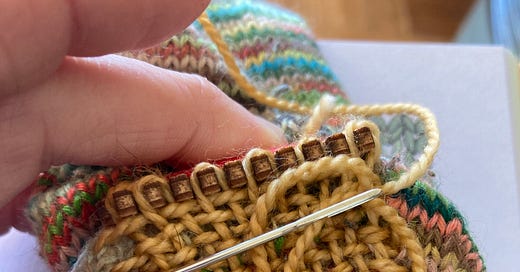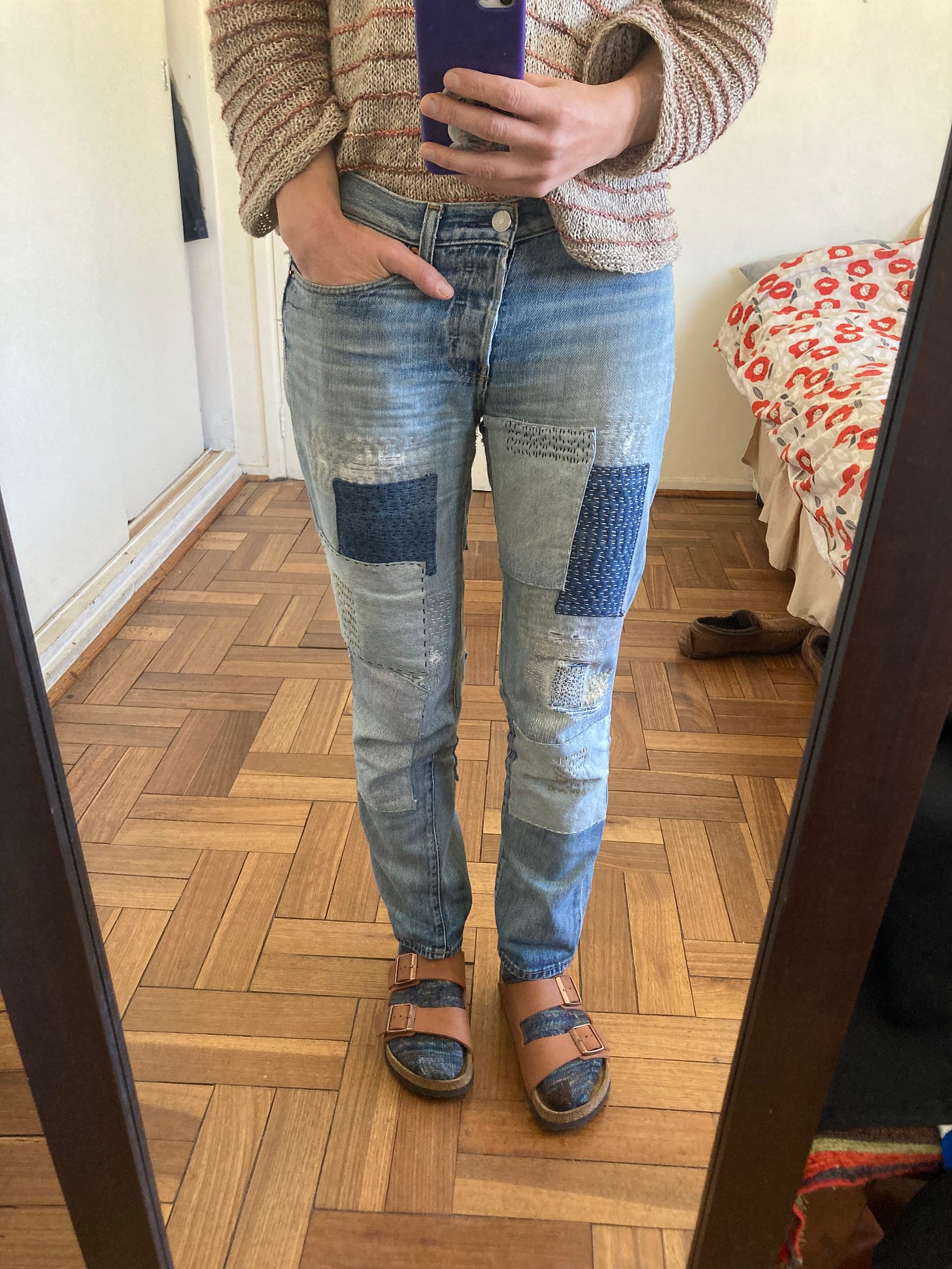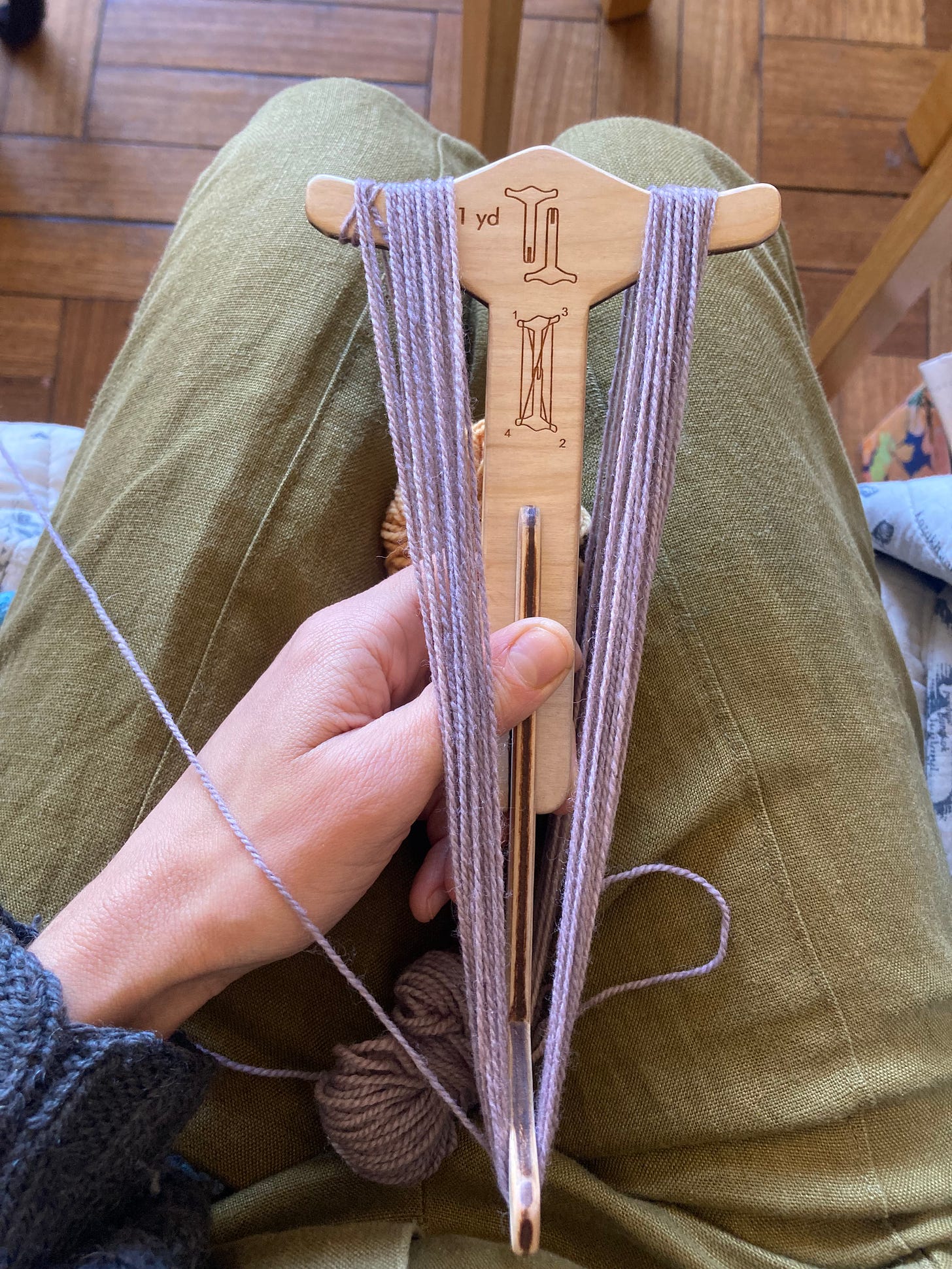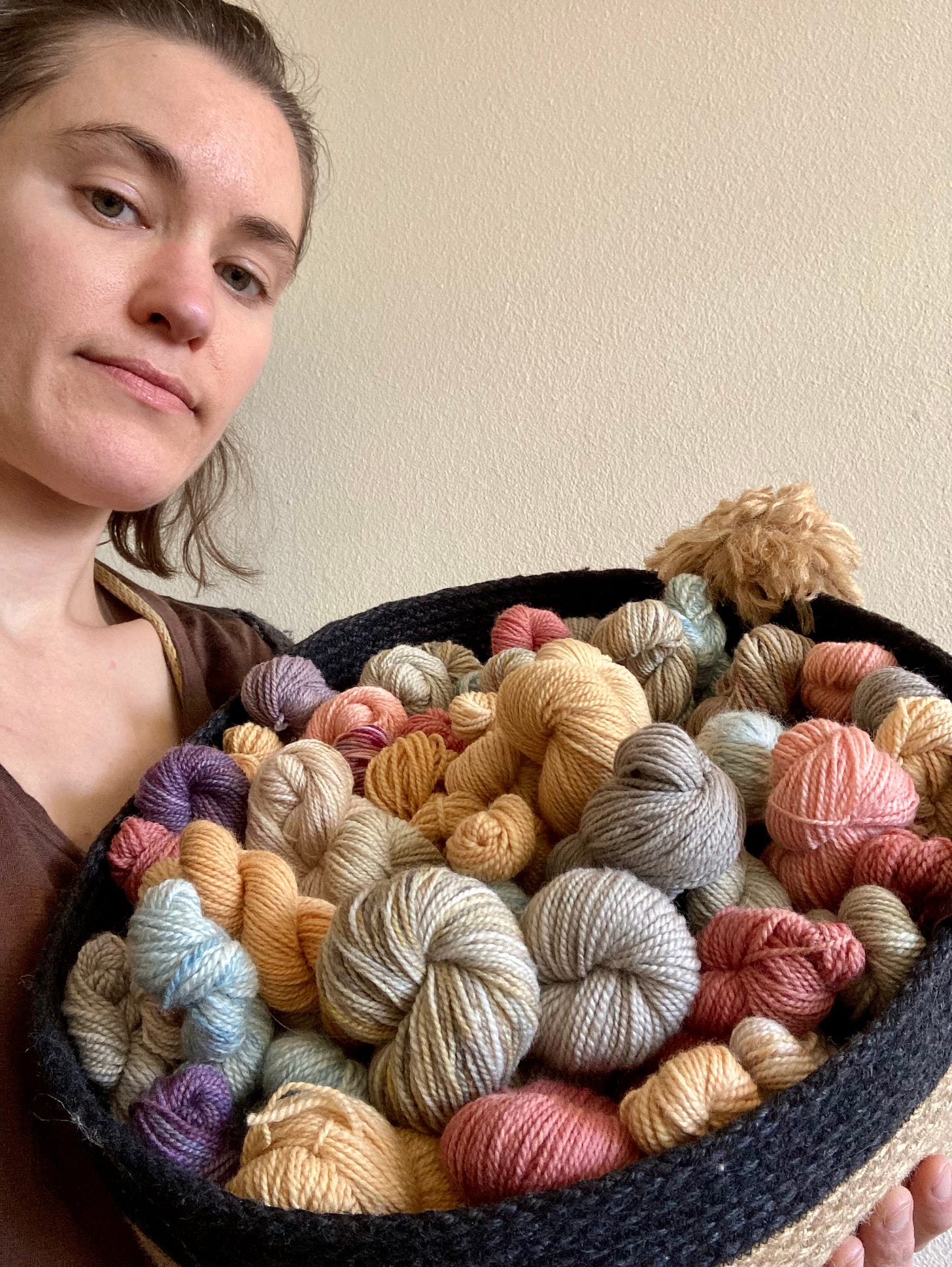On Mending
This newsletter has English and Spanish versions. To choose which language you receive, visit your settings on Substack, find this newsletter under Subscriptions, and select the language(s) you want.
Leer en español aquí.
The thing about mending is that it is never done. This is both exasperating and comforting. So many times, I’ve carefully finished stitching a patch over a hole, only to have a new tear open up right next to it. But I do like to have something to do with my hands, and mending means that I’m never really without a project.
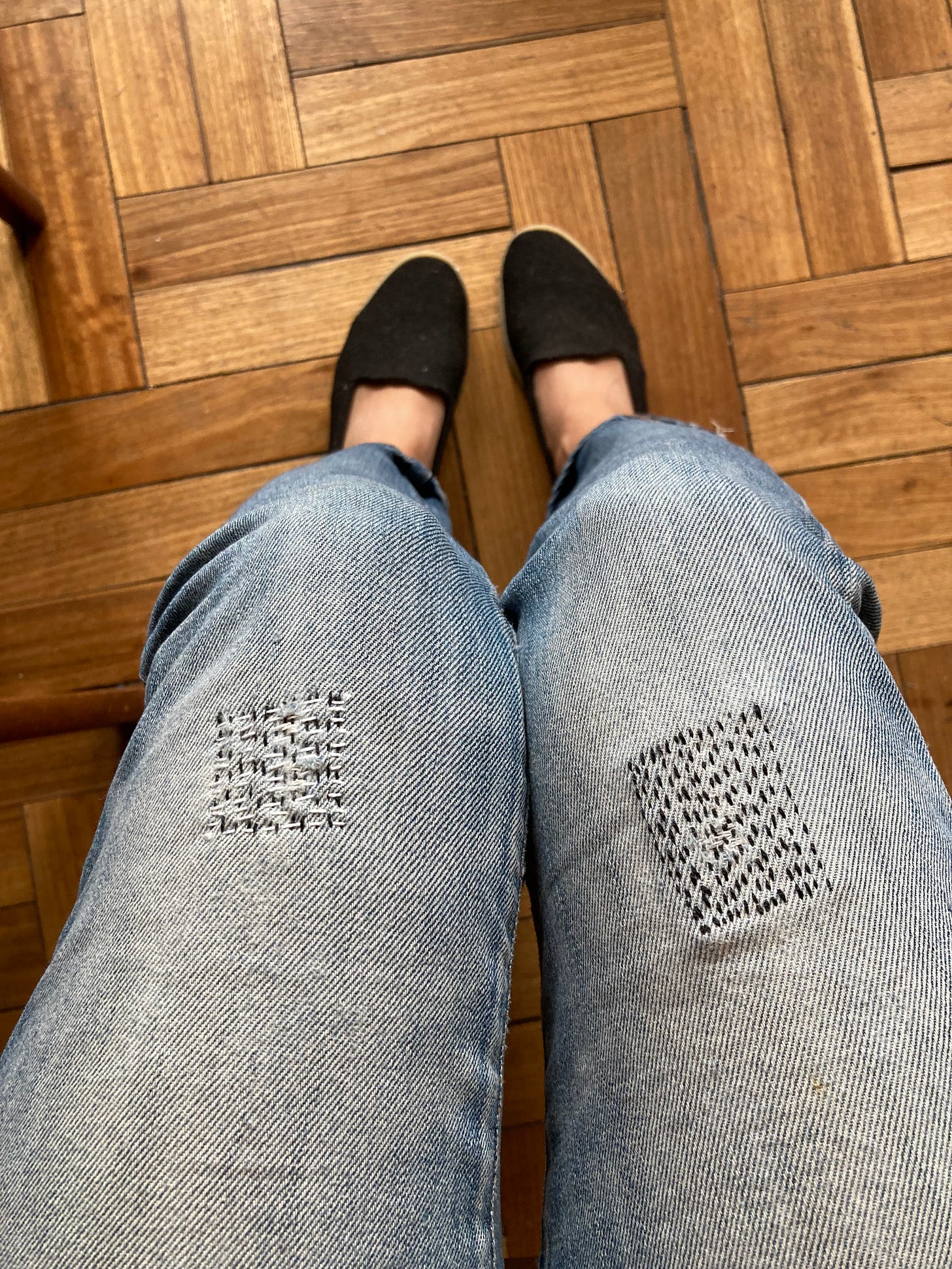
When I first started seeing visible mending from other knitters and fiber artists I felt like I was missing out because I didn’t actually have any clothes that needed mending. Then I stopped buying fast fashion and resolved to make my clothes last as long as I could, and eventually the fabric of my favorite jeans started to wear out, so threadbare that it looked nearly transparent when held up to the light. I took some scraps and made a patch and carefully stitched it down, a neat little accent to the fabric. For some reason I thought I would be finished with mending for a while.
But as long as you keep wearing something, mending is never really done. At a certain point I realized that I couldn’t fit any more patches on the inside of the jeans without reducing the wearing ease and started applying them on the outside. I’m starting to suspect that they now consist more of patches and embroidery thread than original fabric. But I’ve spent so much time mending that my love for them has only increased. Now they are a process more than a pair of jeans, two years of continual, meditative stitching. It’s maybe become a bit absurd at this point but I’m in too deep to stop now. I love wearing this visual record of my process
The simplicity and ingenuity of mending tools connects my practice today with the history of making textiles. Humans have been using needles and thread for thousands of years. You don’t really need anything besides a needle and thread to mend clothes but I appreciate my darning loom immensely. It helps me make a neater mend on socks and generally makes the whole process more fun. Beautiful tools teach me to slow down and enjoy the process of mending: I want to have a usable sock, but I also want to change my mindset, move away from thinking of things as disposable, to find new ways to engage with things beyond just buying. The longer I spend with my things the longer they stay out of a landfill. This shift in my habits is just as important as the repair to the sock.
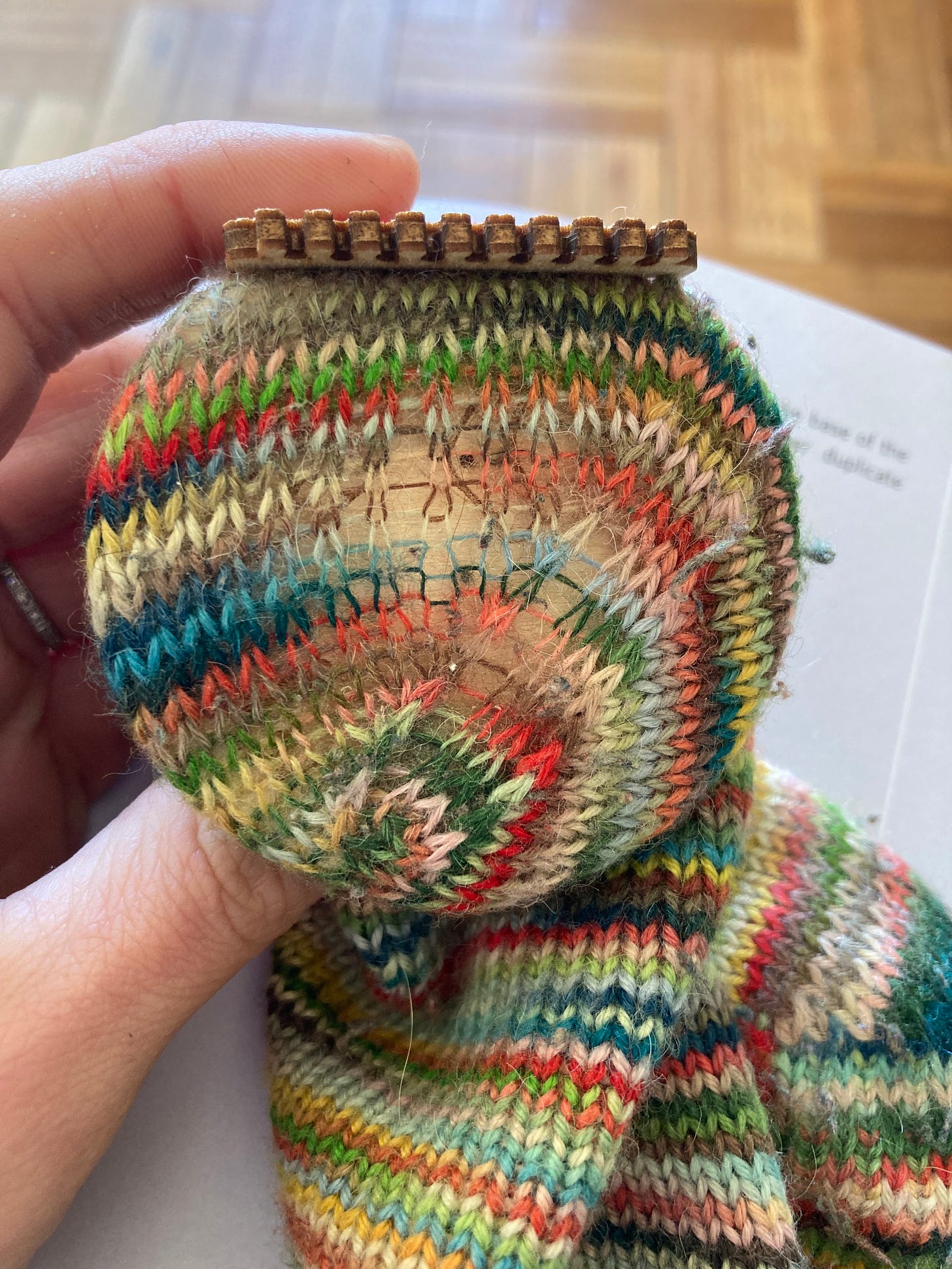
Mending clothes, whether homemade or store bought, reminds me that all clothing is made by humans. It’s careful, skilled work that should have dignity and value whether performed at home or in factories. While today, the reality of most textile production is hidden from consumers, historically it was integrated with daily life, both more mundane and much more precious because the labor that went into making it all was so visible, performed by oneself or by loved ones. Today, mending honors the work that goes into making clothes, even when that work takes place across an ocean.
I don’t always use natural dyes in my mending, whatever scraps of yarn I have will do. But natural dyeing also encourages me to think of my clothing as part of a cycle, something that I will continue working on, mending, overdyeing, over the course of its life. In the past, when all dyes were natural dyes, people understood that colors fade and change over time, and that certain colors, while vivid and beautiful, would only last for a short time. Overdyeing was just a part of the work of caring for clothing. I don’t mean to over-romanticize this period- it was truly a lot of work and I don’t think we all need to return to pre-industrial ways of living. But our current system of producing and discarding clothing is killing the planet, so it’s worth it to ask what we can do differently.
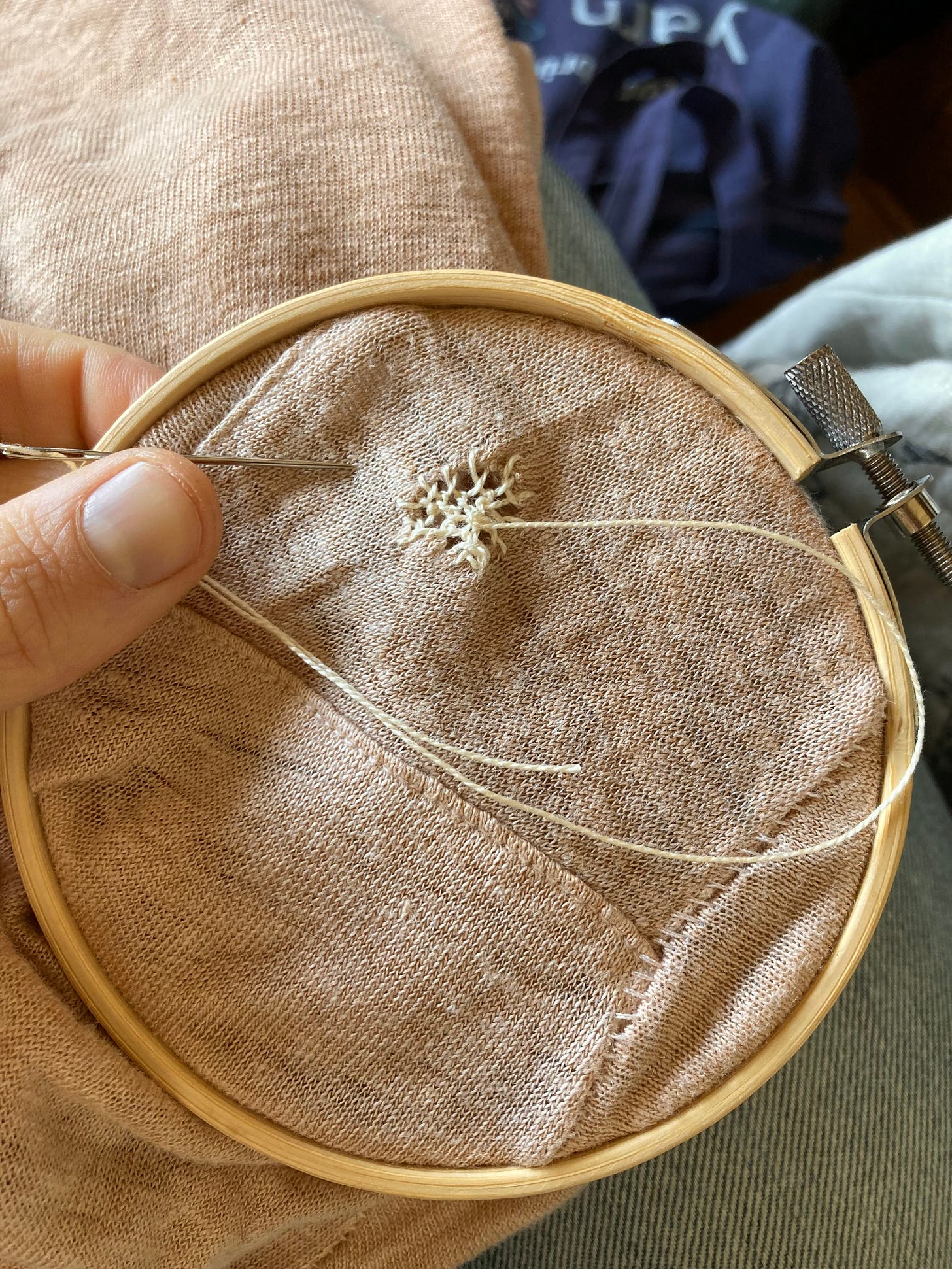
A few artists whose mending work inspires me:
What are you mending or repairing? I’d love to see or hear about it in the comments!
Updates
Expo Teje Primavera is coming up on November 4-5! I was so disappointed to miss July’s version and am thrilled to be back.
Speaking of simple tools that have stood the test of time, I’ve been using my niddy noddy to make mini skeins. I have both 10g and 25g minis that will be available at Expo Teje or are available now. They’re great for mending or duplicate stitch, or small colorwork projects (cowls and fingerless gloves are my go-tos)
Thanks for reading! Until next time,

